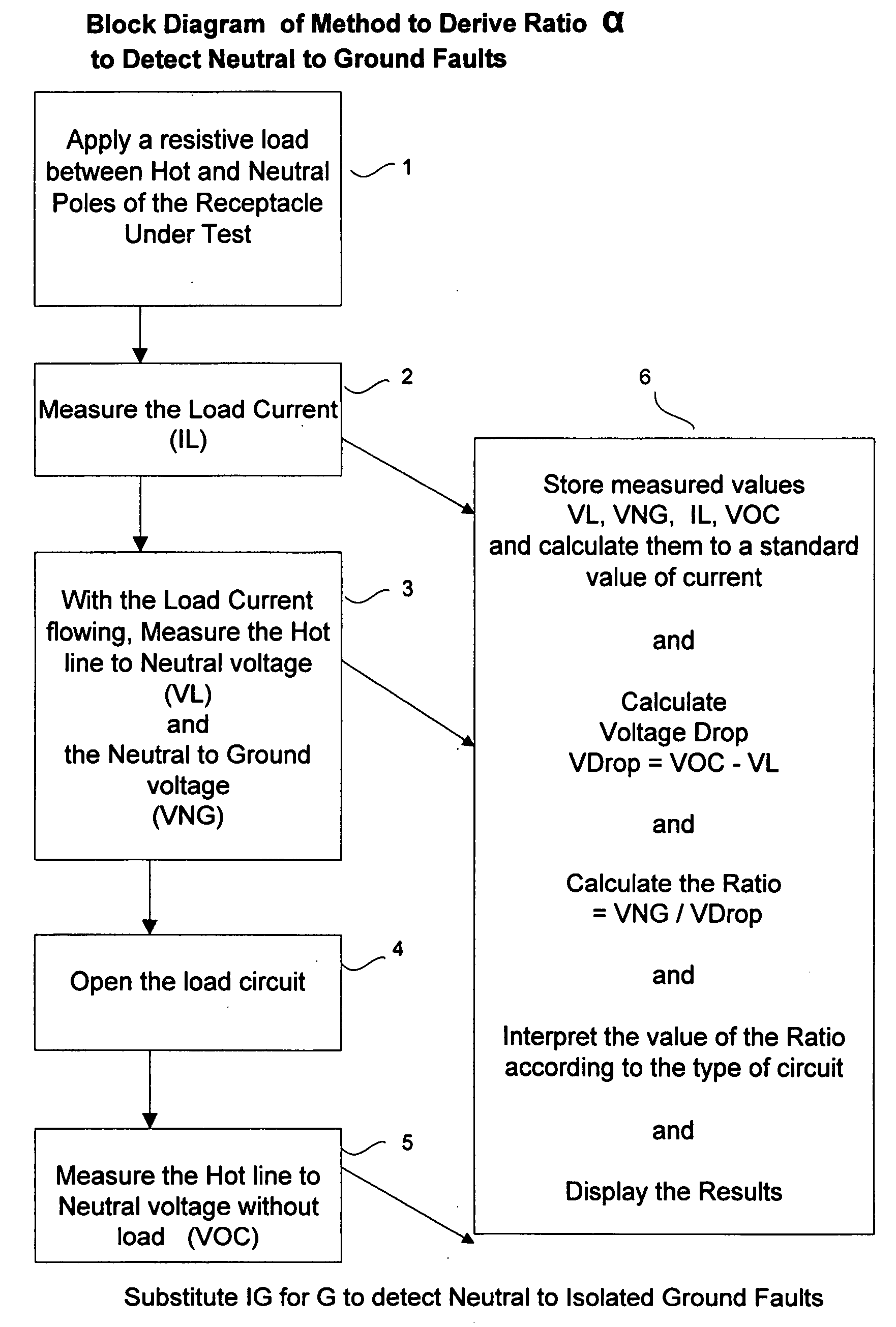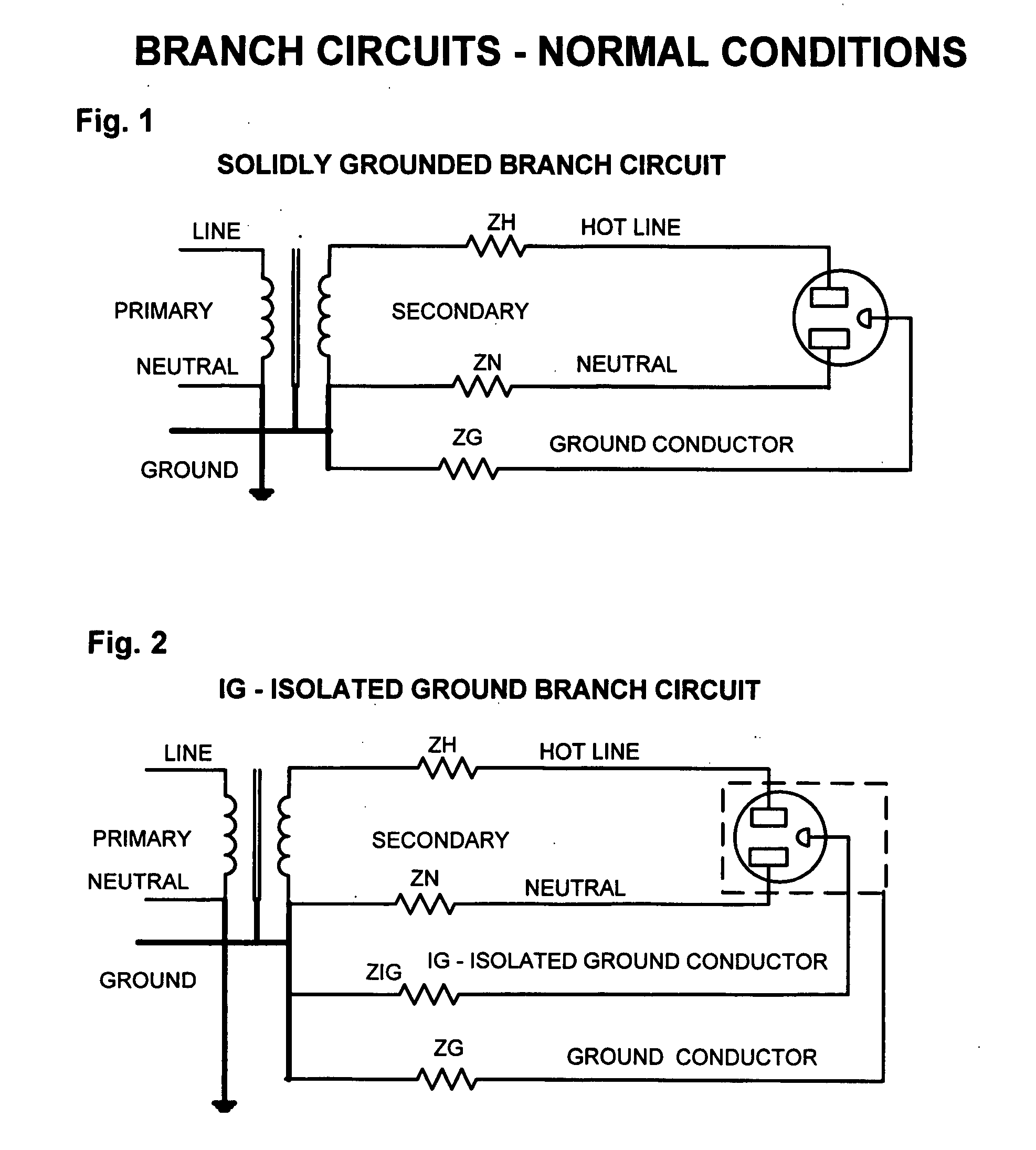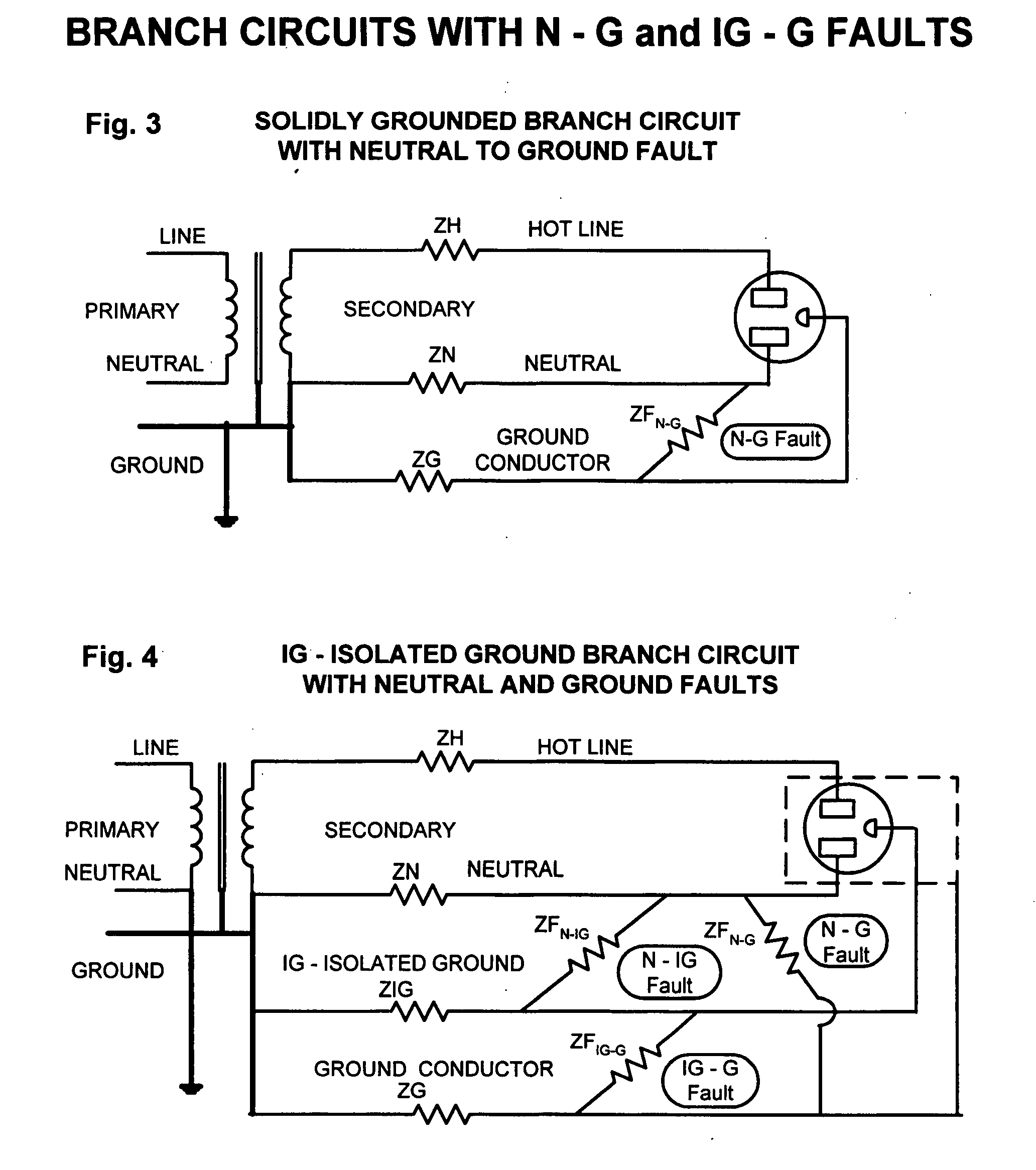Method for detecting electrical ground faults
a ground fault and electrical technology, applied in the direction of short-circuit testing, emergency protective arrangements for limiting excess voltage/current, instruments, etc., can solve the problems of imposing a safety risk, no simple accurate method to check the integrity of an isolated ground conductor, and time-consuming methods
- Summary
- Abstract
- Description
- Claims
- Application Information
AI Technical Summary
Problems solved by technology
Method used
Image
Examples
Embodiment Construction
[0032]In a broadest aspect the invention is directed to a method of detecting faults in live circuits by comparing voltage drops across portions of the circuit, and expressing ratios of these voltage drops as indicative of faults. In general the voltage drop is a measure of the impedance of a portion of the circuit. Preferably the live circuits are alternating current, but would apply to equivalent direct current circuits. Generally the voltage drops are generated by passing electric currents between receptacle poles and measuring voltage drops caused by the electric currents.
[0033]Preferably the portions of the circuit are selected from the group consisting of neutral-ground loop, and hot-neutral loop, neutral-isolated ground loop, isolated ground-ground loop, and neutral conductor, ground conductor and isolated ground conductor. The portions of the circuit compared may be the hot-neutral loop and neutral-ground loop. The portions of the circuit compared may be the hot-neutral loop...
PUM
 Login to View More
Login to View More Abstract
Description
Claims
Application Information
 Login to View More
Login to View More - R&D
- Intellectual Property
- Life Sciences
- Materials
- Tech Scout
- Unparalleled Data Quality
- Higher Quality Content
- 60% Fewer Hallucinations
Browse by: Latest US Patents, China's latest patents, Technical Efficacy Thesaurus, Application Domain, Technology Topic, Popular Technical Reports.
© 2025 PatSnap. All rights reserved.Legal|Privacy policy|Modern Slavery Act Transparency Statement|Sitemap|About US| Contact US: help@patsnap.com



